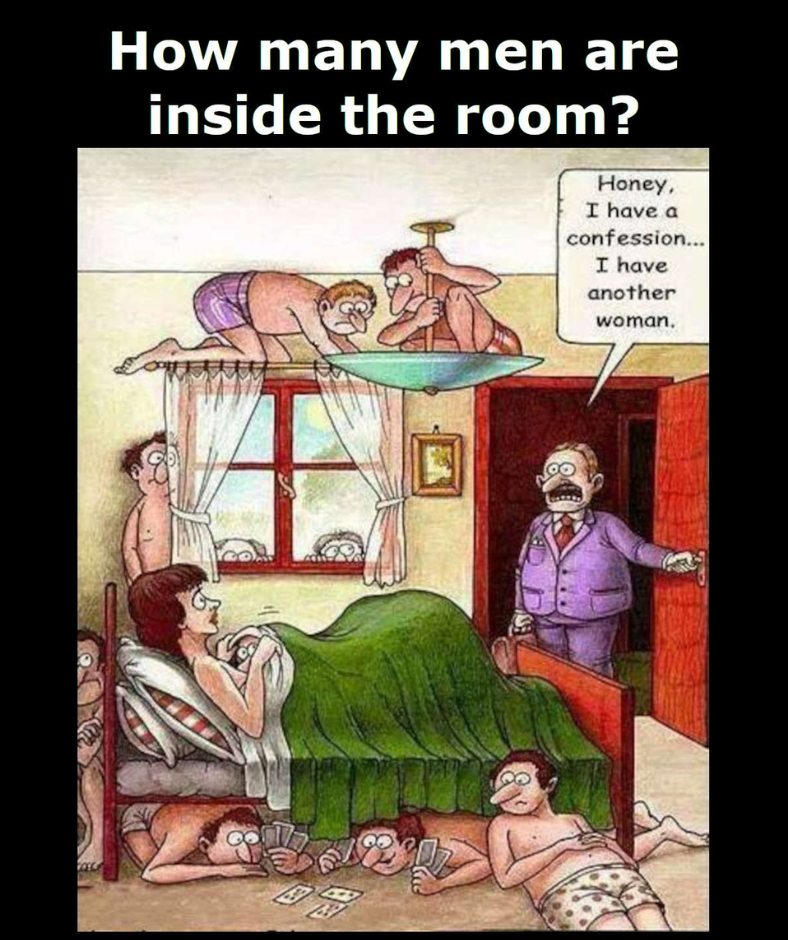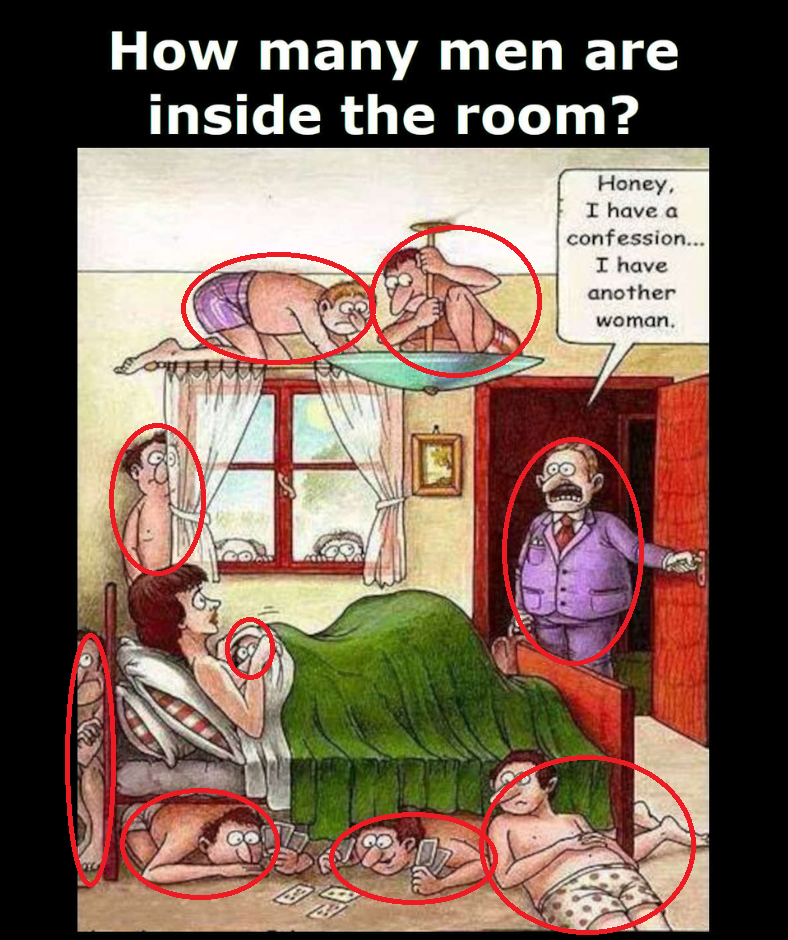At first glance, this scene might remind you of a wacky sitcom moment—a bedroom buzzing with awkward tension, unexpected surprises, and visual chaos. A woman makes a sudden confession to her husband, and in the blink of an eye, attention turns to the room where something clearly doesn’t add up.

This isn’t just a dramatic scenario—it’s actually a clever visual riddle with one deceptively simple question: How many men are inside the room? It’s easy to get swept up in the humor or emotions of the moment, but that’s not what this challenge is about. Instead, it’s designed to test your focus, your logic, and how well you can ignore distractions and zero in on details. The illustration that goes along with this puzzle is intentionally over-the-top. The husband looks bewildered, the wife sheepish, and the room is filled with exaggerated hiding spots. But the point isn’t to get caught up in their story—it’s to use your observation skills to figure out exactly how many men are physically present inside the room. This isn’t about what makes sense in the narrative or what feels right—it’s about what your eyes can clearly detect within the four walls of that chaotic space. So, let’s start counting.
First, the husband is obviously present—he’s right there in plain sight, center stage in the scene. That’s one. Then, if you direct your eyes to the ceiling fan, you’ll notice two faces peeking out—barely visible but definitely there. That brings us to three. Move your gaze toward the window, and you’ll spot someone awkwardly hiding behind the curtain—he’s not very well concealed, but he counts. Now we’re at four. On the bed, a suspicious lump under the blanket betrays the presence of another person—make that five. Look down by the bed’s edge, and you’ll see someone crouching behind the frame, adding one more to the count. That’s six.
Now scan the carpeted floor. There are three more men lying there, whether hiding or unconscious is unclear, but they’re definitely part of the scene. That brings us to a total of nine men inside the room. That’s the answer—nine individuals are clearly visible and physically present within the room. But wait, some people get thrown off by what they see through the window. If you look outside, you’ll spot two more men peering in. It’s easy to assume they should be included in the count, especially since they seem tied to the unfolding drama. However, the riddle is very specific—it asks how many men are inside the room. The men outside the window may be watching, but they are not physically within the room’s walls, so they don’t count. This detail trips up many people, which is why the key to solving this puzzle lies in reading carefully and observing even more carefully. What makes this riddle brilliant is its simplicity. It doesn’t require advanced logic or math skills—just attention to detail and the ability to block out the emotional noise of the scene.
It’s a great reminder that sometimes, our assumptions can blind us to the obvious. We see a busy scene and instantly start drawing conclusions based on context or feelings, when what we really need to do is slow down and take a fresh, objective look. Puzzles like this one are popular because they’re both entertaining and mentally stimulating. They tap into our curiosity and challenge our brain to work a little differently. In a fast-paced world filled with endless distractions, they offer a brief moment of mindful engagement—forcing us to stop, think, and look more carefully. They also make great conversation starters. Share this puzzle with friends or family, and you’ll likely start a fun debate. Some will count too fast and miss a few hidden figures.

Others will get tripped up by those men outside the window. But once everyone takes a breath, looks again, and really focuses on the task, the answer becomes clear: nine men inside the room, no more and no less. In conclusion, this riddle teaches us that the most basic questions can sometimes be the hardest to answer—not because they’re complicated, but because we’re not truly paying attention. When life gets chaotic, the truth often hides in plain sight. All we need to do is take a moment, trust our eyes over our assumptions, and remember that careful observation often leads to the clearest answers.





